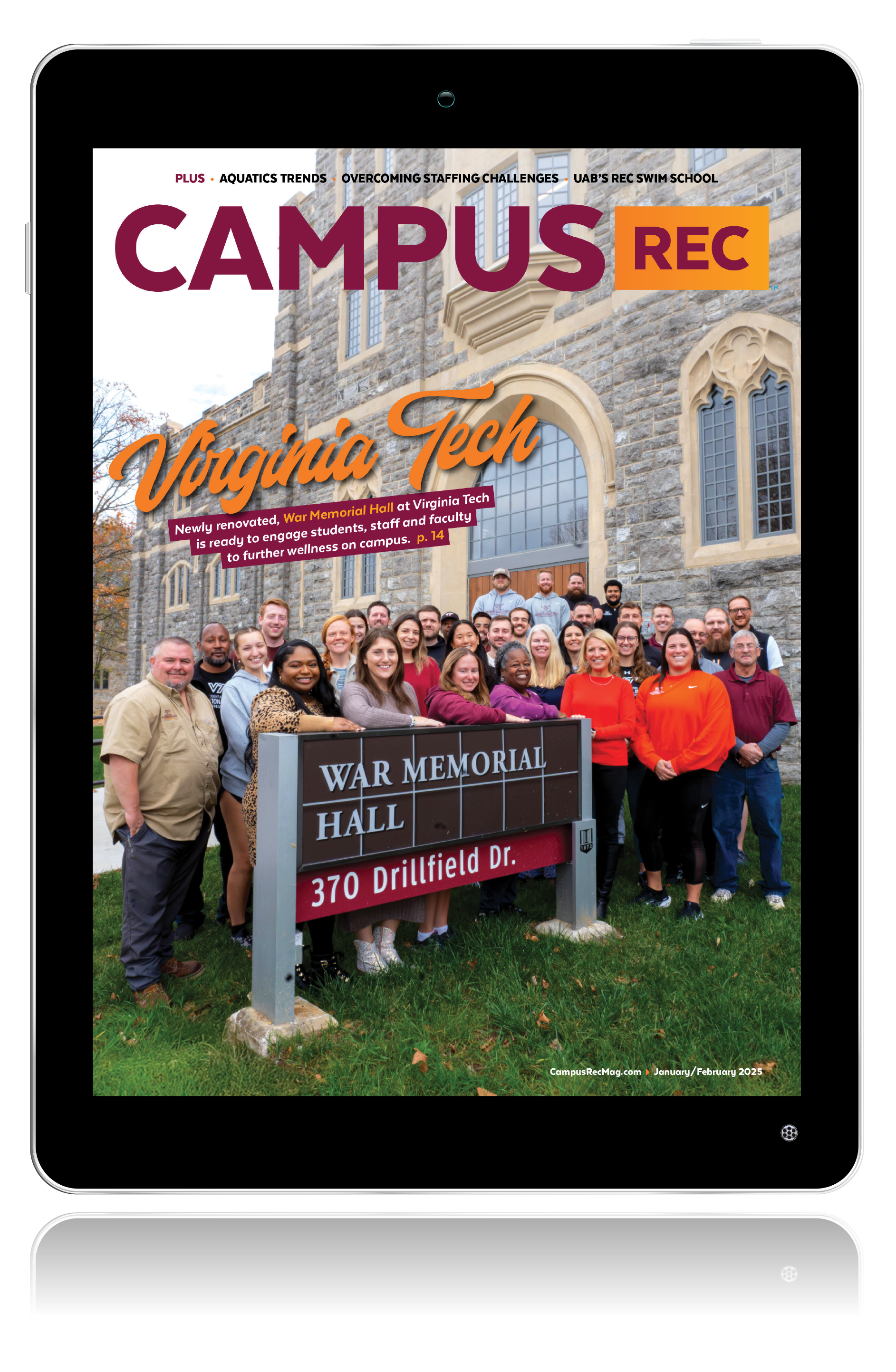Here are eight considerations for campus rec professionals when it comes to building an esports lounge:
1. Include Institutional IT and AV Teams
At the outset, be sure to include other primary stakeholders in the planning for an esports space. Several departments have been planning and supporting modern technology learning spaces for years. They are also going to have an excellent understanding on the power and network requirements for PC stations and audio-visual/broadcast spaces. Bring them to the table early.
2. Be Intentional with Your Design
Understand the necessary elements for your program from the start. A well-designed esports space is more than simply packing in as many PCs that will fit in a room. Review several layout options for the space and consider having renderings of the best option(s) prepared so other stakeholders can see your vision.
3. Make it Scalable
The average project is 25 to 30 PC stations and three to four dedicated console gaming spaces. This isn’t an overwhelming size, yet it allows for an ample kick off for a program.
4. Competitive and Varsity Teams
Some programs have defined a dedicated competitive varsity space within their esports arena or lounge. It may be a stage, raised platform, higher visibility location or simply PC stations with better equipment or peripherals. These may range in numbers from five or 10 stations, and they may be restricted to competitive team use only.
5. Program Atmosphere
Wall graphics, signage, customized furniture and PC cases with school logos are all amazing ways to build pride in your program and have a visually-stunning space.
6. Accessibility
Making a program inclusive also means having ample gaming stations that can accommodate students with physical handicaps or special needs. Plan to include 5% to 10% minimum that are wheelchair accessible. Beyond that, support gamers with adaptive controllers and peripherals and understand there are over 20 disorders that can impact sensory processing. Some students can become overwhelmed in an esports environment. Please consider those students who may have auditory, visual, tactile or other sensitivities.
7. Broadcasting and Casting
Plan to incorporate broadcasting into the space. The preparation and skills needed for a live broadcast demonstrate why broadcasting within esports programs can be a major asset in preparing students for careers after college. The ideal space will include a broadcast studio, slightly removed from the gaming area.
8. Coaching and Huddle Space
Look to define dedicated space for the coaches. Not all conversations are meant for the entire team. Some can be strategic, disciplinary or supportive in nature. Allow the esports coaches the same access to office and space other programs provide.
Scott Dorn is the executive vice president at Spectrum Industries, Inc. Connect with Scott at sdorn@spectrumfurniture.com or visit spectrumfurniture.com/en/esports to learn more.










